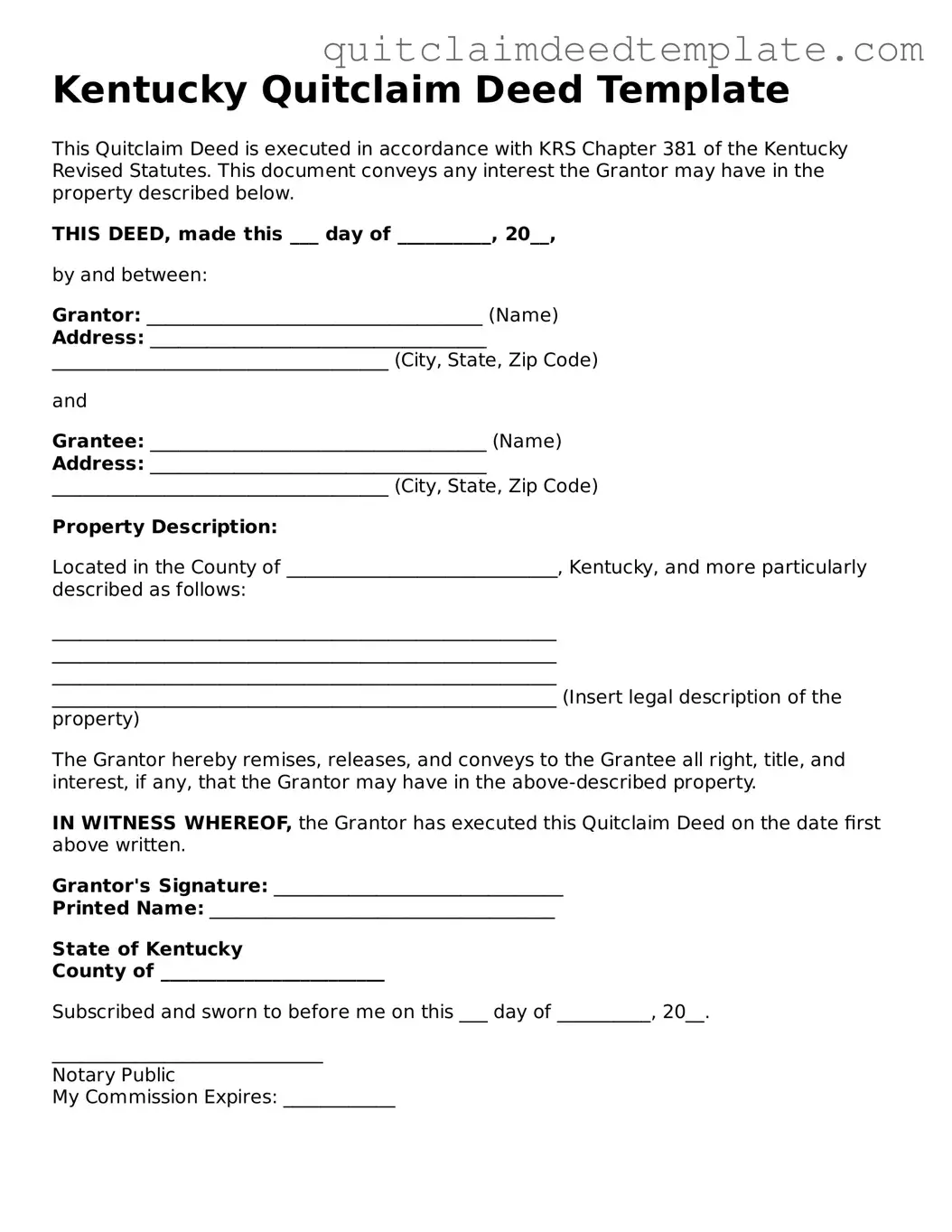Documents used along the form
A Kentucky Quitclaim Deed is a legal document used to transfer ownership of real estate from one party to another without any guarantees about the property’s title. While this deed serves its purpose, several other forms and documents often accompany it to ensure a smooth and legally sound transaction. Below is a list of these essential documents.
- Affidavit of Consideration: This document provides a sworn statement regarding the amount paid for the property. It helps clarify the financial aspects of the transaction and can be important for tax purposes.
- Property Transfer Tax Form: Often required by the state, this form documents the transfer of property and assesses any applicable taxes. It ensures compliance with local tax regulations and helps avoid future disputes.
- Title Search Report: A title search report is a comprehensive examination of public records related to the property. It reveals any liens, encumbrances, or claims against the property, ensuring the buyer is fully informed about the title's status.
- Settlement Statement: This document outlines all the financial details of the real estate transaction. It includes the purchase price, closing costs, and any adjustments, providing transparency for both the buyer and seller.
Using these documents alongside the Kentucky Quitclaim Deed can facilitate a clearer understanding of the transaction and protect the interests of both parties involved. Proper documentation is key to a successful real estate transfer, ensuring all legal requirements are met and potential issues are addressed proactively.
